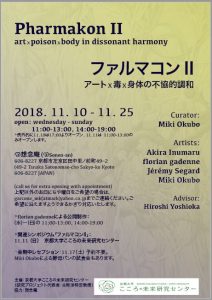Report on the Opening Symposium of “The Significance of ‘Poison’ in Contemporary Society” Exhibition and Open Studio “Pharmakon II – Art×Poison×Body in Dissonant Harmony
Hiroshi Yoshioka’s (Professor, KRC) art exhibit, “Pharmakon II – Art×Poison×Body in Dissonant Harmony” was held at Sonen-an in Tanaka, Sakyo-ku, Kyoto from 11/10 to 11/25, 2018. As part of the project, the Opening Symposium, “The Significance of ‘Poison’ in Modern Society” Exhibition and Open Studio “Pharmakon II – Art×Poison×Body in Dissonant Harmony” was held on November 11, 2018 at the Inaori Foundation Center.
Prof. Yoshioka lead the symposium as the general moderator and Okubo as a moderator. Segard, Gadenne and Inumaru presented their artworks and research reports.
The theme of Okubo’s installation was “to eat”. In her artworks, she introduced the process of baking bread using natural yeast by exhibiting the fruit to grow yeast, the cultured yeast, the pictures and writing. Baked bread was offered to visitors. The artwork questions the food culture of contemporary society, which is too industrialized and whose processes are often not transparent.
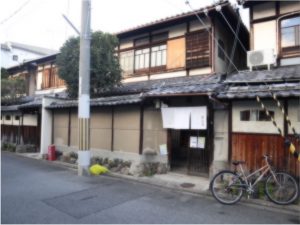
The exhibition at Sonen-an
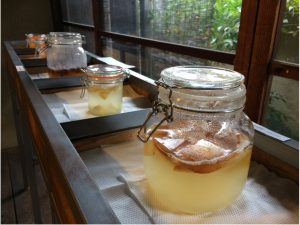
The artwork by Miki Okubo
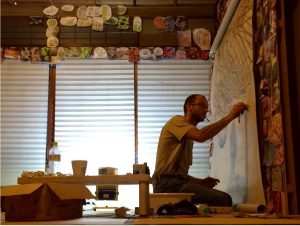
Florian Gadenne working on his piece
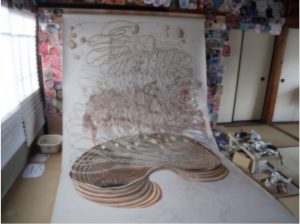
「cellule babélienne 3」
In his piece “Pharmakon”, Inumaru used his unique technicue called “Sublimation by sunlight” which uses a magnifying glass to burn parts of paper with sunlight. He complexly visualized the invisible energy that is potent in life and objects. The work brings attention to how the same herbs can be used as both medicine and poison.

The artwork by Akira Inumaru
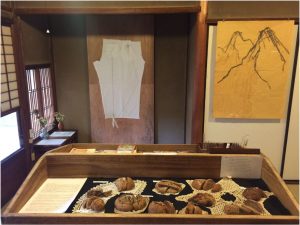
The artwork by Jérémy Segard
In his installation, Jérémy Segard used old used clothfrom the hospital building of CHU where he conducts research and is an artist-in -esidence. He has been interested in the relationship between respiratory infections, immunity, the body and the environment. The central theme of this particular artwork was “greening” and “disinfection”.
The diet therapist, Masayuki Tsujino lectured on “Dietary approaches to coexisting with poison”. He posited that it is important to know how we can coexist with poison because it is very difficult to completely avoid them in highly industrialized contemporary societyn (e.g. pesticide and food additives). He also discussed how “kokoro” is most important concerning food and how people who avoid “poison” obsessively and consume only natural foods can be unhealthy.
His lecture gave us an opportunity to re-think our conventional way of relating to food.
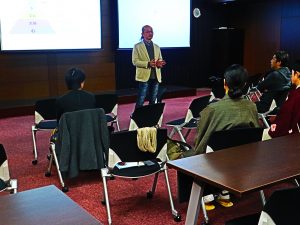
Prof. Hiroshi Yoshioka
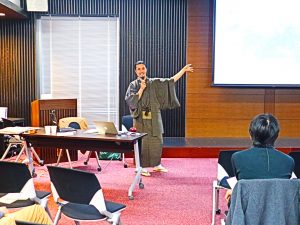
Masahiro Tsujino
2018/12/19
